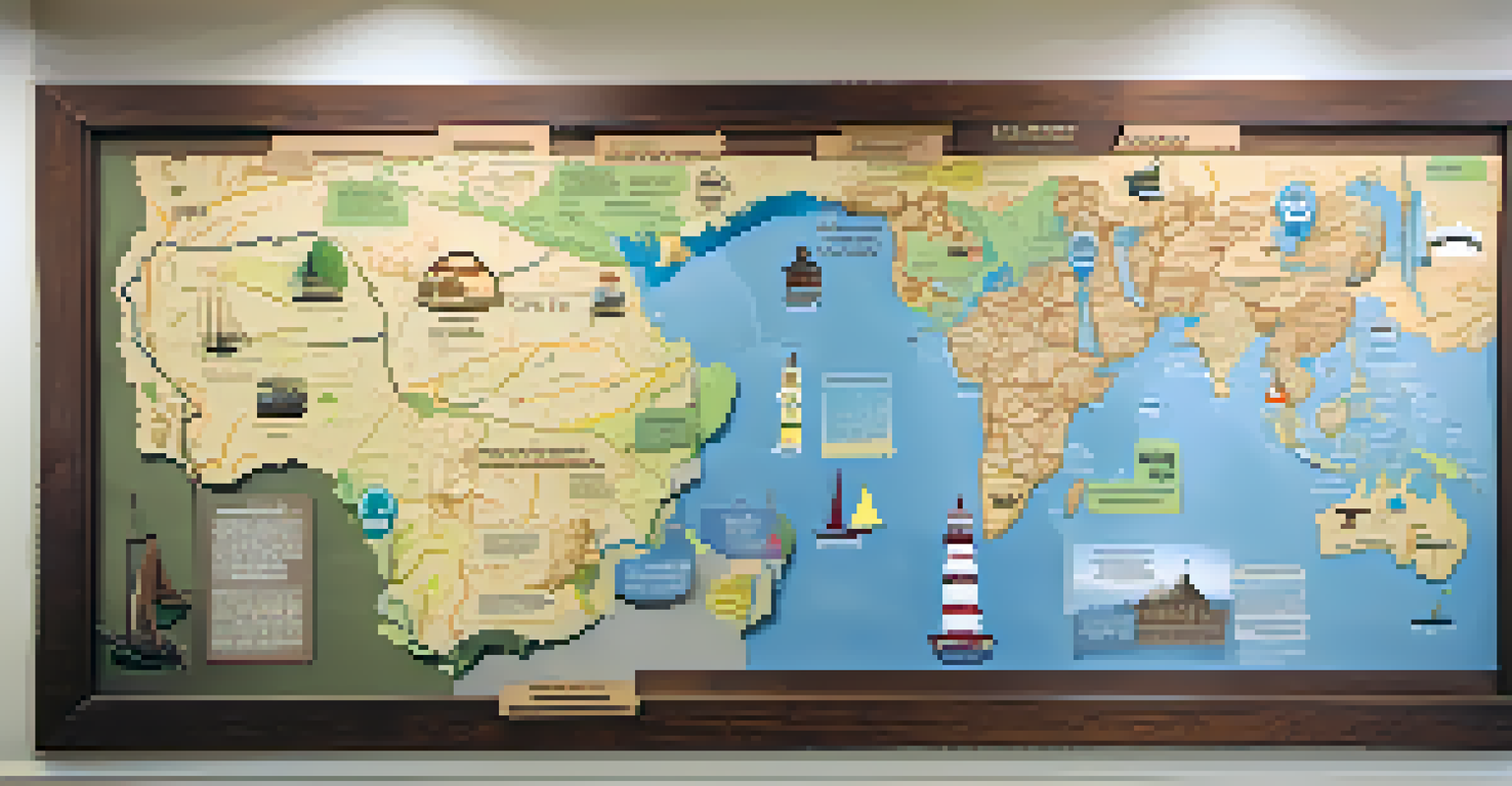Sports Heritage Trails: Discovering Cities Through Sports

What Are Sports Heritage Trails and Their Importance?
Sports heritage trails are designated routes that guide you through the historical and cultural significance of sports in a city. They often highlight landmarks, stadiums, and monuments that tell the story of local athletes and teams. By walking these trails, visitors can appreciate the deep connections between sports and community identity.
Sports do not build character. They reveal it.
These trails serve as a bridge connecting the past with the present, showcasing how sports shape local culture. For instance, a trail might lead you to the birthplace of a famous athlete or the site of a historic sports event. This not only enriches the visitor's experience but also fosters a sense of pride among locals.
Moreover, sports heritage trails contribute to tourism, encouraging visitors to explore a city beyond the usual attractions. They provide a unique lens through which to understand a place, making sports an integral part of the travel narrative.
How to Find Sports Heritage Trails in Your City
Finding sports heritage trails in your city can be as simple as a quick online search or a visit to the local tourism office. Many cities now promote these trails as part of their tourism strategy, making them easy to locate. Websites, brochures, and even mobile apps often provide detailed information on trail routes and points of interest.

Local sports museums and historical societies are also great resources for discovering these trails. They often have curated maps or guided tours that highlight key sports history sites. Additionally, engaging with community groups or sports clubs can offer insider knowledge about lesser-known trails worth exploring.
Explore Sports Heritage Trails
Sports heritage trails highlight the historical significance of local athletes and teams, enriching visitors' understanding of community identity.
Social media is another platform where you can find recommendations and share experiences. Utilizing hashtags related to sports heritage or your city can lead you to hidden gems and fellow enthusiasts who are equally passionate about exploring sports history.
Top Cities Known for Their Sports Heritage Trails
Several cities around the world are renowned for their sports heritage trails, each offering a unique blend of history and culture. Cities like Boston, known for its rich baseball history, feature trails that take you through Fenway Park and other iconic locations. Similarly, cities like London showcase their sporting past with trails that highlight famous stadiums and athletes.
The more difficult the victory, the greater the happiness in winning. The defeated are in misery.
In Australia, Melbourne boasts a sports precinct that includes the Melbourne Cricket Ground, where visitors can immerse themselves in the legacy of cricket and Australian rules football. These cities not only celebrate their sports heritage but also create engaging experiences for both locals and tourists to enjoy.
Exploring these cities through their sports trails allows visitors to appreciate the local culture deeply. You might find yourself standing where legends played or learning about the impact of sports on community development, making each visit memorable.
Experiencing Local Culture Through Sports Heritage
Sports are often a reflection of local culture, and heritage trails provide a unique opportunity to experience this firsthand. As you walk these trails, you’ll encounter not just historical sites but also local eateries, shops, and gathering places that contribute to the community's sporting spirit. This immersive experience helps you understand the significance of sports in shaping local identity.
For example, while following a trail, you might stop at a café frequented by local athletes or discover a mural celebrating a sports team's achievements. Such interactions enrich your understanding of the city beyond its monuments and allow you to connect with its people and stories.
Engage with Local Culture
Walking these trails allows visitors to experience the local culture through eateries, shops, and community events tied to sports.
Additionally, many trails host events and activities, from guided tours to community sports days, fostering a sense of belonging. These experiences can spark conversations and connections with locals, deepening your appreciation for the culture and history surrounding sports.
The Role of Technology in Enhancing Heritage Trails
Technology has revolutionized the way we explore sports heritage trails. From interactive maps to augmented reality experiences, tech tools help bring history to life. For instance, some trails offer smartphone apps that provide audio guides or historical context as you walk, making the experience more engaging and informative.
Social media also plays a critical role in promoting sports heritage trails. Visitors often share their experiences online, using photos and stories to inspire others to explore. This digital sharing helps create a community of sports enthusiasts who can connect over shared interests and experiences.
Moreover, technology allows for the preservation of sports history in innovative ways. Virtual tours and online archives ensure that even those unable to physically visit can still engage with a city's sports heritage, fostering a broader appreciation for its history.
Community Involvement in Sports Heritage Trails
Community involvement is essential for the success of sports heritage trails. Local organizations, volunteers, and sports clubs often collaborate to maintain and promote these trails, ensuring they remain relevant and engaging. This grassroots effort not only preserves history but also fosters community pride and ownership.
Events such as guided walks, educational talks, or sports festivals can enhance community engagement. These activities bring locals together, allowing them to share their stories and experiences related to sports heritage. It creates a vibrant atmosphere where history is celebrated and passed down through generations.
Tech Enhances Trail Experiences
Technology, including apps and social media, brings sports heritage trails to life, making historical exploration more interactive and accessible.
Moreover, involving the community can lead to the discovery of untold stories. Locals often have unique insights or anecdotes that can enrich the narrative of a trail, making it a more authentic representation of a city's sports history.
Planning Your Visit to a Sports Heritage Trail
When planning your visit to a sports heritage trail, consider the best time of year for a leisurely exploration. Many trails are best enjoyed during spring or fall when the weather is pleasant, and local events are often scheduled. Checking the trail's website for updates on events or guided tours can enhance your experience.
It's also wise to allocate enough time for your visit. While some trails can be completed in a few hours, others may require a full day to explore thoroughly. Be sure to wear comfortable shoes and stay hydrated, as you might find yourself walking more than you anticipated while soaking in the local culture.

Lastly, don’t forget to engage with locals and fellow trail-goers. Whether it’s swapping stories or asking for recommendations, these interactions can lead to unexpected discoveries and make your visit even more memorable.